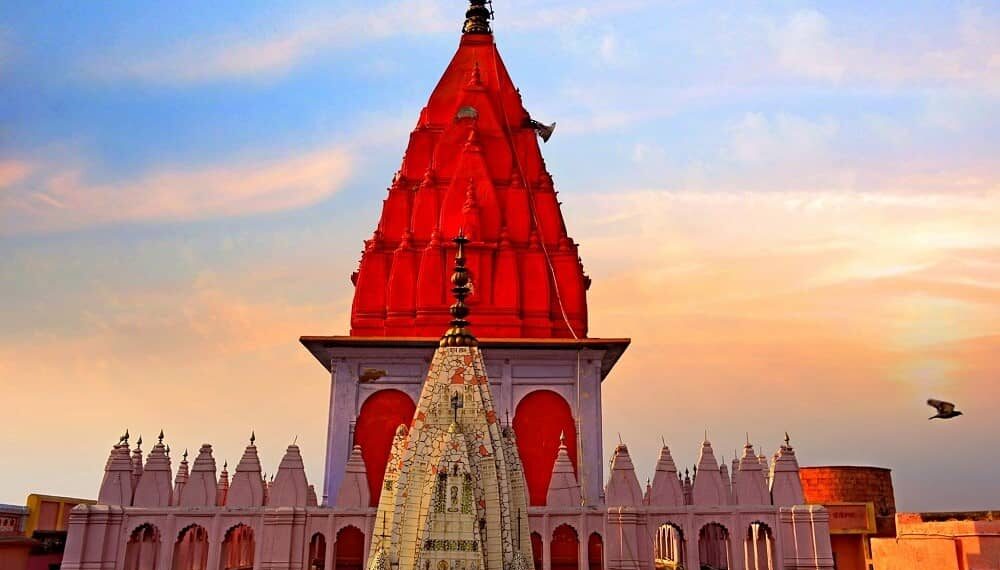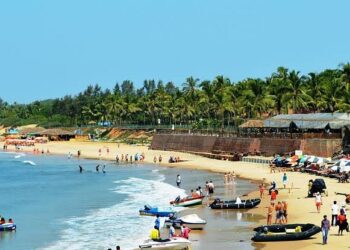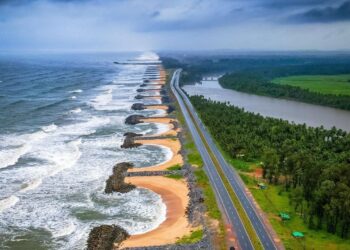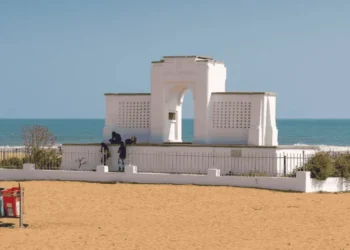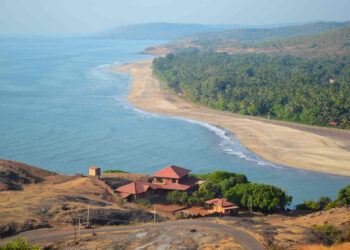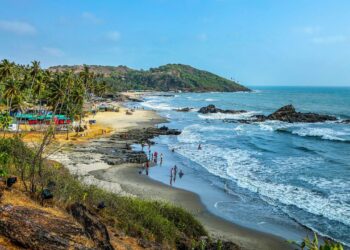In Ayodhya, Uttar Pradesh, near the Saryu River in the Ramkot area, the Hanumangarhi Temple is a sacred shrine dedicated to worship Lord Hanuman, the loyal devotee of Lord Rama. It is located near Ram Janmabhoomi and is the shrine under the charge of Bairagi Mahants of Ramanandi Sampradaya and Nirvani Akhara.
History of Hanumangarhi Temple
The Hanumangarhi Temple was made in the 10th century by Nawab Mansur Ali of the Awadh dynasty. Ayodhya, known as Lord Rama’s birthplace in the Ramayana, is a sacred city tied to Hindu tales. Local talk says the temple was built to honor Hanuman, who guarded Rama’s birthplace. They say Hanuman lived in a cave on this hill, watching over Ayodhya, and the temple marks that spot. Records say Nawab Safdarjung, in 1765, gave 52 acres of land to sadhus for its upkeep, and the temple was made stronger as a small fort. It is mentioned in the Ayodhya Khanda of the Skanda Purana.
The temple sits on a 70-foot hill, reached by 76 stone steps. In 1855, during the Sepoy Mutiny, it was a safe place for devotees hiding from unrest. The Nirvani Akhada, a group of Hanuman-worshipping ascetics, has managed the temple since the 16th century. Repairs in the 1980s kept its old look. Saints long back sang Hanuman’s devotional songs, making it known among common people. Now, many come to Ayodhya’s sacred ground.
Legends of Hanumangarhi Temple
Hanuman Garhi Temple stands close to the Ram Janmabhoomi site in Ayodhya. As per tradition, after Lord Rama’s return to Ayodhya with Sita and Hanuman following the defeat of Ravana, Lord Hanuman took residence in a cave near Ramkot to watch over the city. The Skanda Purana mentions that King Vikramaditya established Hanuman Garhi along with 360 other shrines. During the Mughal era, the temple was reportedly destroyed under Emperor Aurangzeb, who erected a mosque in its place. Later, the Bairagis seized the site by defeating Nawab Shuja-ud-Daula of Awadh, dismantled the mosque, and constructed a new temple dedicated to Lord Hanuman. Some sections of the Muslim community believed the temple stood over a former mosque, and repeated attempts were made to demolish it, though these efforts did not succeed.
Another tale says the idol was set by Baba Abhay Ram Das, a saint who saw Hanuman in a dream in the 10th century. The saint placed the idol after Hanuman’s holy touch blessed it.
Some stories say chanting the Hanuman Chalisa 11 times at the temple grants strength, peace, or success in tough tasks. Others claim the hill’s air carries Hanuman’s protective power, making it a place of divine care. During Ram Navami, devotees believe Hanuman visits the nearby Ram Janmabhoomi, 1 kilometer away, to honor Lord Rama.
Architecture of Hanumangarhi Temple
The Hanumangarhi Temple sits on one acre on a hill in Ramkot, made in a simple North Indian style. The main part has a low stone top, carved with Hanuman’s club, monkeys, and Ramayana scenes, all in red sandstone. Inside, the Hanuman idol, 6 feet tall and covered in orange sindoor, stands with a club in his right hand and a picture of Rama and Sita in his heart. A 2-foot idol of Anjani, Hanuman’s mother, is nearby, lit by oil lamps.
A small hall has four stone pillars, carved with Rama’s bow and Hanuman’s tail. Lesser shrines for Rama, Sita, Lakshman, and Shiv-Parvati are in the yard, made of stone. The Rama shrine shows him with a bow, for truth. The Sita shrine, from 1200, has her with a lotus, for love. The Lakshman one shows him with a spear, for duty. The Shiv-Parvati one has a lingam, for power. The stone yard feels holy, near the Saryu. A plain gate has Hanuman’s face. A water ghat, Saryu’s edge, is for ritual dips.
Rituals and Festivals
The temple stirs for festivals. Ram Navami, in April, is big, with all-day chants and oil pujas. Hanuman Jayanti, in March or April, honors Hanuman with lamps. Deepawali, in October or November, sees daily idol baths with milk.
The Saryu ghat, said to clean sins, draws crowds at festivals. Devotees offer boondi laddoos, sindoor, coconuts, and marigold flowers. Some chant the Hanuman Chalisa 108 times, taking 3 hours, for special wishes. Charity meals feed 5,000–10,000 during festivals.
Information for Travelers
Hours and Entry: Open every day, 4:00 AM to 10:00 PM. It’s free to enter, but prayers cost ₹50–200. No pictures in the inner room.
Clothing: Wear clothes covering shoulders and knees. Women for prayers wear sarees or suits, men wear kurtas.
How to Get There:
Air: Maharishi Valmiki International Airport, Ayodhya, 10 km away, links to Delhi (1.5 hours), Lucknow (1 hour), Mumbai (2.5 hours).
Train: Ayodhya Junction, 1 km away, links to Delhi (12 hours), Lucknow (3 hours), Varanasi (4 hours).
Road: Ayodhya is 130 km from Lucknow, 170 km from Varanasi on NH 27. Buses from Lucknow reach Ayodhya.
Best Time to Visit: October to March is cool, 15–25°C. Weekdays are quiet. Ram Navami’s full, with 20,000–50,000 devotees, so plan early.
Nearby Attractions:
Ram Janmabhoomi: 1 km away, a Rama shrine, birthplace of Rama.
Kanak Bhawan: 1.5 km away, a Rama-Sita shrine from 1891.
Nageshwarnath Temple: 2 km away, a Shiva shrine tied to Kush, Rama’s son.
Saryu River Ghat: 1 km away, a bath spot for prayers.
